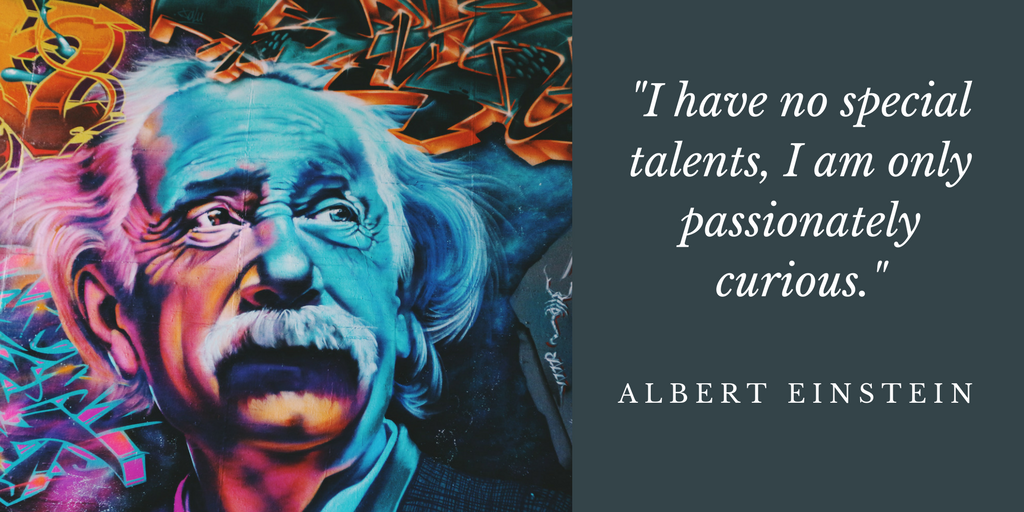
In 2006 Professor Dr. Ugur Şahin, an oncologist was working on a curiosity-driven research project to help find out if it might be possible to develop a vaccine to control and destroy cancerous tumours by activating the body’s own immune system. This approach was fundamentally different to the more common treatments of radiation and chemotherapy. Curiosity driven projects often have no clear goal but allow scientists to take risks and explore the art of the possible.
In 2008 Dr. Ugur Sahin and his wife Ozlem Tureci founded a small biotech company called BioNTech who you may never have heard of, if it wasn’t for COVID-19. Because together with Pfizer, BioNTech are the suppliers of the first Covid vaccine to be used in the UK. That early curiosity driven research in 2006 provided Sahin and Tureci with the answers to our 2020 problem.
Curiosity is the wick in the candle of learning – William Arthur Ward
Curiosity is the desire to know or learn something in the absence of extrinsic rewards. The point being, there is no reward other than the answer itself. It is a psychological trait and because of that, has a genetic component, some people are just born more curious. However, nurture has an equally important role to play, and although it’s argued you can’t teach curiosity you can encourage people to become more curious by using different techniques. See below.
Sophie von Stumm, a professor of Psychology in Education from the University of York believes that curiosity is so important in terms of academic performance that it should sit alongside intelligence and effort (conscientiousness) as a third pillar. Her research found that intelligence, effort and curiosity are key attributes of exceptional students.
Curiosity follows an inverted U-shape when shown in graphical form. Imagine a graph, along the horizontal axis we have knowledge and on the vertical, curiosity. When we first come across a new subject, we know very little and as such our curiosity rises as does the level of dopamine, but as we find out more and more our curiosity will reach a peak before ultimately falling.
“When you’re curious you find lots of interesting things to do.” Walt Disney
Curiosity types – it would be far too simplistic to think that there is only one type of curiosity. Mario Livio, an astrophysicist talks about a few of them in his book Why? What Makes Us Curious.
- Epistemic curiosity is the one we have been talking about so far and relates to the type of curiosity that drives research and education. It’s generally a pleasurable state, the result of a release of dopamine that comes from mastery and the anticipation of reward.
- Perceptual curiosity is primal and exists on a continuum between fear and satisfaction, it’s the curiosity we feel when something surprises us or when we get an answer that doesn’t quite fit with what we expected. The motivation is to seek out something novel although the curiosity will diminish with continued exposure.
- Diversive curiosity is transient and superficial and is often experienced when swiping through your Twitter feed. Its effectively a means of jumping from topic to topic and normally fails to result in any form of meaningful insight or understanding.
You might think that as we grow older, we become less curious simply because we know more. However, although we may lose some elements of diversive curiosity or the ability to be surprised, research shows that epistemic curiosity remains roughly constant across all age groups
But why?
The roots to curiosity can be traced back to a form of neoteny, an evolutionary condition that means although we reach maturity, we retain juvenile characteristics. Effectively we are more childlike than other mammals, continuing to be curious and playful throughout our lives. You can often tell if people are curios by looking at their eyes, which will become more dilated. This indicates that noradrenaline, a neurotransmitter has been released in the brainstem’s locus coeruleus, the part of the brain most strongly linked to arousal, vigilance, and attention. In addition, noradrenaline is also integral to a number of higher cognitive functions ranging from motivation to working memory and therefore hugely valuable for learning.
This may well be a slightly complicated way of saying that if you are curious about something, you are more likely to pay attention, making it easier to remember and in so doing learn.
How to become more curious
“Millions saw the apple fall, but Newton asked why.” Bernard Baruch
Research into curiosity has confirmed some of what we might have already assumed to be correct, for example in a paper published in 2009, it concluded that people were more likely to recall answers to questions they were especially curious about. However it also showed that curiosity increased when answers were guessed incorrectly, suggesting that surprise was a factor in improved retention.
“I know you won’t believe me, but the highest form of human excellence is to question oneself and others.” Socrates
The concept that curiosity is based on an Information gap was first put forward by George Loewenstein in 1994 which leads to one of the most powerful tools we can use to improve curiosity, asking questions. The best question to ask is probably WHY, but don’t forget Kipling’s other 5 honest serving men, WHAT, WHEN, HOW, WHERE and WHO. Below are a few more ideas.
- Ask Socratic questions. This involves asking open ended questions that provoke a meaningful exploration of the subject, this process sits at the heart of critical thinking.
- Create environments that promote curiosity. Challenges that need solving require a curious mind. Case studies are also more of interest, providing several different routes to explore.
- Guess the answer first. As mentioned above, if you guess first it increases the surprise factor. Loewenstein also argued that guessing with feedback stimulates curiosity because it highlights the gap between what you thought you knew and the correct answer.
- Failure is feedback. Finding out why you got something wrong can be just as interesting as knowing that you are right, it certainly increases curiosity.
- Start with the curious part of a subject. You may not be curious about the whole subject, but try to find the part you are interested in and start there.
And if you would like to find out more
- This is Your Brain on Curiosity | Matthias Gruber | TEDxUCDavisSalon
- The Case for Curiosity: Mario Livio at TEDxMidAtlantic 2012
What’s the answer, what did kill the cat?
it was IGNORANCE…………









